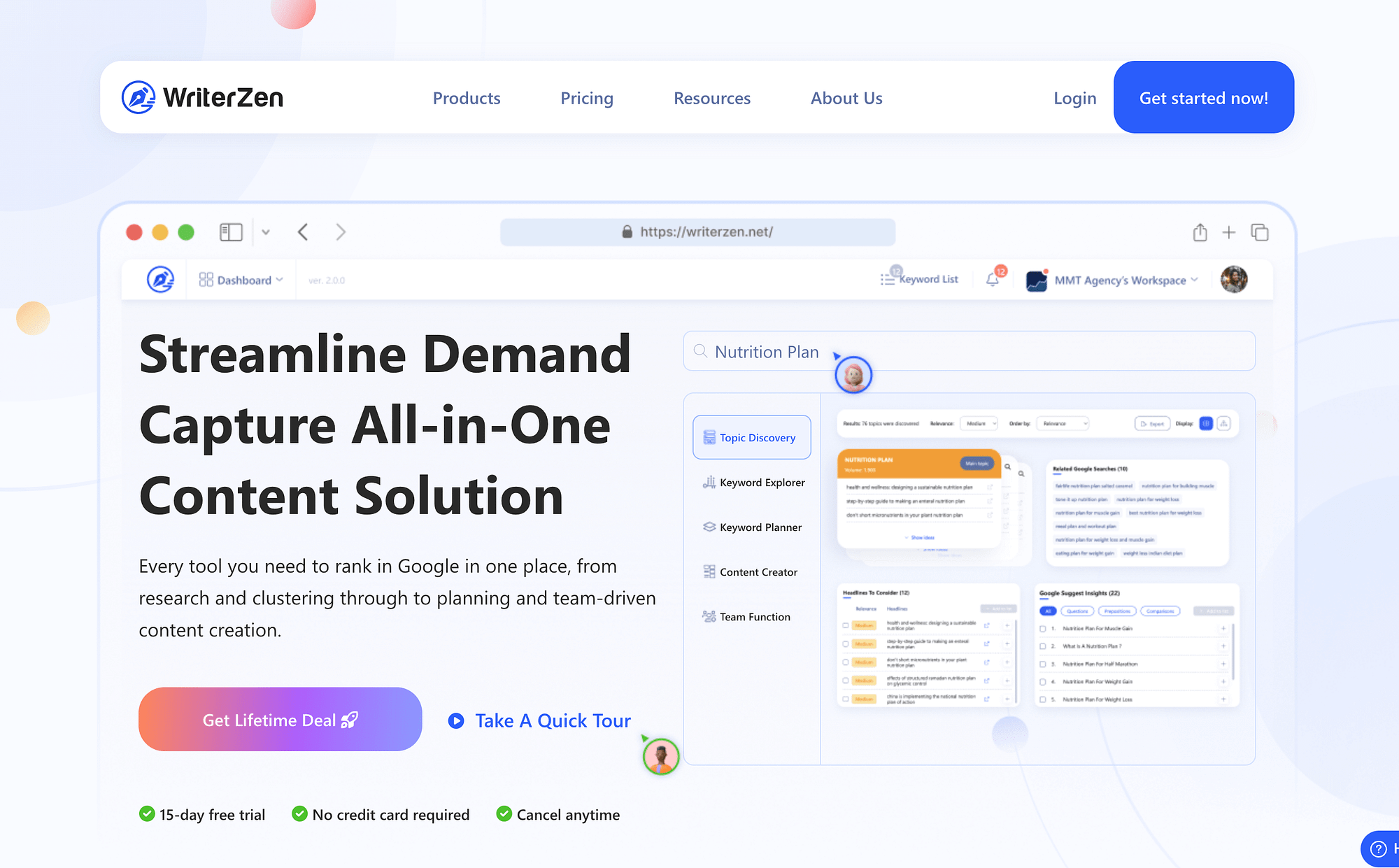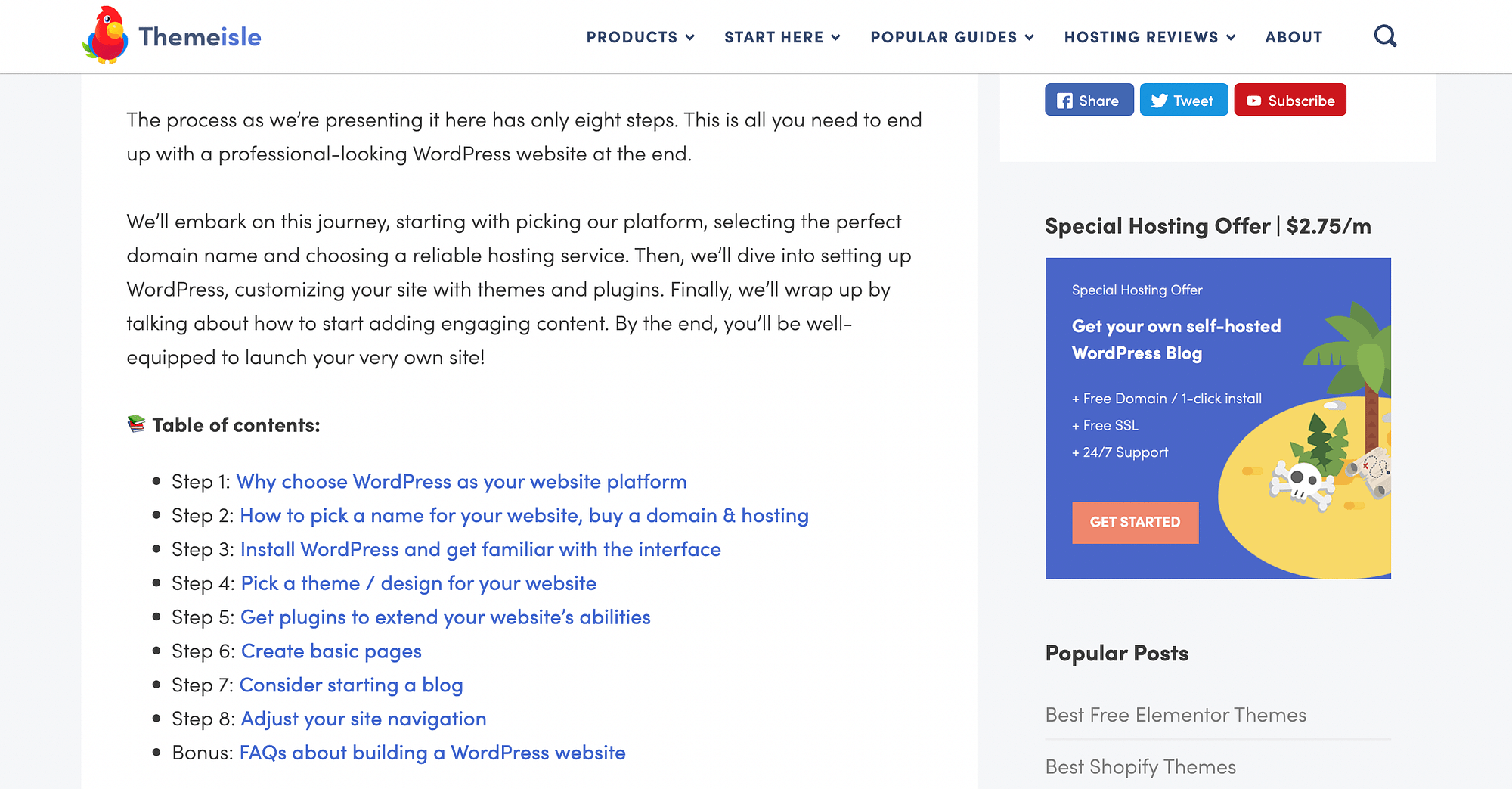If you run a blogging business, you likely already know how challenging it can be to publish articles consistently. That’s because generating topics, researching, and writing takes up a lot of time. So, you may be interested in how to create a blog post outline.
Whether you’re creating your first post or trying to optimize your writing process, an outline can make a huge difference. It can help you boost productivity, improve content quality, enable you to assign work, and more. 💎
In this post, we’ll start by discussing the benefits of using outlines when blogging. Then, we’ll show you how to create a blog post outline in six simple steps. 🚶 Let’s get to it!
📚 Table of contents:
Why you should create a blog post outline
Before we walk you through the steps for how to create a blog post outline, let’s discuss why you may want to do so.
For starters, taking the time to plan out your blog articles (as opposed to winging it) can improve the quality of your content. That’s because outlines help you thoroughly develop your thoughts and blog post ideas. When you’re providing truly valuable content to your readers, your blog is more likely to be successful.
Additionally, if you’re struggling to produce blog content on a consistent schedule, outlining your posts beforehand can be super useful. It might even help you overcome writer’s block. A blog post outline system can enable you to establish an effective workflow, thereby boosting your productivity.
Furthermore, if you have a strategy for search engine optimization (SEO), creating blog outlines around keywords can help boost your content in rankings.
Lastly, if you’re working with a team of bloggers (or you plan to in the future), you can create blog outlines for other writers. This way, you can delegate work while also ensuring the content quality is up to your standards.
How to create a blog post outline (in 6 steps)
Now, here’s how you can create a blog post outline in six simple steps!
Step 1: select a topic 💡
The first step is to select a blog topic. At a minimum, you’ll want to make sure that you’re choosing something that’s relevant to your blog niche.
For instance, if you blog about sustainable living, it wouldn’t really make sense to choose a topic related to professional basketball. Straying too far from your niche could confuse readers or, worse, cause them to doubt your authority.
You’ll also want to choose your blog topic around a viable keyword. This way, people will be able to find your content in search engines.
You can use a tool like Google’s Keyword Planner to find a strong keyword to build your post around:
If you want more advanced keyword research tools, you may also want to try a premium tool such as ahrefs.


When picking a keyword, you’ll ideally want something that has high search volume and low competition. If your blog niche or subject matter is highly competitive, you might try narrowing your scope and/or using long tail keywords.
Keyword research itself can also help you come up with ideas, since you’ll be able to see suggestions based on your initial search.
Step 2: conduct additional research on your topic 🕵🏼♂️
Once you’ve landed on a strong keyword to plan your blog post outline around, it’s a good idea to conduct some additional research on your topic.
Search the keyword on Google to see what other blog posts appear in the results pages. Peruse these articles to see what type of blog post is ranking highly.
Your aim when conducting this type of research is to learn how you can make your article competitive. However, any information you come across can also help you brainstorm for the next step in this guide, (which is choosing key points and an angle).
If you’re not confident in your research abilities, you might consider using AI SEO tools like Outranking or WriterZen:


This type of software can be very helpful when it comes to competitor analysis.
Step 3: decide on your key points and angle ✅
As we mentioned, the next step in creating a blog post outline is to decide on your key points and “angle.” By angle, we mean the perspective you want to offer readers.
To establish your angle/perspective, you can ask yourself what you want the reader to take away from the article. For example, if you’re writing a blog post about minimizing the use of single-use plastic, the “takeaway” could be to start by taking small actions in your day-to-day life.
Hopefully, the research phase has helped you determine both your main talking points as well as your angle.
Organize your key points in a bulleted list in a convenient location, like a Google Doc. At this point, don’t worry about these ideas being ordered or even cohesive. You just want to get them on the page.
Step 4: choose a blog post type/framework 🏗️
Once you’ve gotten all your main points down, and you’ve figured out your angle, you’ll want to choose a blog post type. This will give your blog post outline (and ultimately the article) a framework to follow.
When it comes to blogs, there are some tried-and-true post types that you may want to try out. Here are a few of them:
- Tutorial post: In this type of article, you show readers how to do something by walking them through all the steps in the process.
- Roundup post: Providing users with a collection of tools, tips, or recommendations is another popular approach.
- Listicle post: This is similar to a roundup, but usually provides less context.
- Explainer post: This is the least rigid of the frameworks, because it’s a post that simply explains a concept to readers.
Of course, this list is not exhaustive. Some of these post types might not be appropriate for your subject matter, and you may have something else in mind. Just be sure to choose a format that will work well with your topic.
Step 5: create a structure for your key points and takeaway 🚧
Next, you’ll need to create a structure for your blog post outline.
If you really want to optimize your blogging workflow, you may want to create an outline template structure for each blog post type. This way, you can easily plug and play your key points and takeaway for future articles.
The basis for the structure of your blog post outline should be headings. So, think about what your main headings will be, and separate your key points into those headings.
It’s also important to note that these headings are crucial not only for organizing a post but also for readability. Especially, if you’re creating long-form content.
What’s more, you can use headings later on to create a table of contents:


As a result, readers will be able to navigate your post more easily.
Step 6: establish your narrative arc 🏹
Lastly, you’ll want to think about the narrative arc of your blog article. At a minimum, blog posts should have an introduction, a body, and a conclusion.
For instance, if you’re writing a tutorial post, your introduction could briefly present the topic and discuss why it’s essential. It’s also a good place to briefly outline some main points and the key takeaways. This way, readers know what to expect.
Of course, the “body” of the post will include things like the steps in a tutorial or the items in a listicle. Meanwhile, the conclusion can reiterate the relevance of a topic and reiterate the key points and takeaways.
⚠️ If you’re having trouble organizing the body of your post, consider the what/why/how approach. Ask yourself:
- What is this post about?
- Why is it important to readers?
- How can you do it? (for tutorials/advice posts)
Then, try arranging the answers to these questions in this order.
Basically, a cohesive narrative is crucial if you want your readers to get the most out of your blog posts. Since it can improve the quality of your content, it can also help your posts rank higher in search results.
Once you have this narrative pinned down, you should also be able to more easily come up with your blog post title. Now you’re ready to write your blog post!
Conclusion 🧐
Producing high-quality blog articles on a regular basis can be difficult. If you’re looking for ways to optimize this process, creating blog post outlines can be very useful.
As a first step, choose your topic around a viable keyword and research your competitors. Then, decide on an angle and a post type, such as a tutorial or roundup. Finally, create a structure for your key points and establish a narrative arc. When you follow these steps, you’ll be better equipped to create top-notch, high-performing blog posts. 😎
Do you have any questions about how to create a blog post outline? Let us know in the comments section below!
Free guide
4 Essential Steps to Speed Up
Your WordPress Website
Follow the simple steps in our 4-part mini series
and reduce your loading times by 50-80%. 🚀
Was this article helpful?
No
Thanks for your feedback!
Keep reading the article at Themeisle Blog. The article was originally written by Sophia Lee on 2024-01-23 07:00:00.
The article was hand-picked and curated for you by the Editorial Team of WP Archives.

